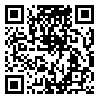BibTeX | RIS | EndNote | Medlars | ProCite | Reference Manager | RefWorks
Send citation to:
URL: http://irj.uswr.ac.ir/article-1-450-fa.html
Objectives: Joint attention is one of the most important prerequisite of language and social development. There are two types of joint attention, Initiating joint attention and Responding to joint attention. This study examined the development of responding to joint attention in typically developing children in 8-30 month.
Methods: this study was cross-sectional. 61 children (40 female and 20 male) were examined in age 9, 12, 15, 18, 24 and 30 month. Tasks of joint attention scale of Early Social Communication Scales (ESCS) were used to assess children. Colmogrov-Smirinov and Kruskal-Wallis were used for data analysis and mean scores were computed for all groups.
Results: Data analysis showed that there was significant difference between mean ranks of groups. Children scores had an increasing pattern across 9 to 30 month.
Discussion: Results of this study indicated that responding to joint attention is developing from 9 to 30 month. Of course there are individual differences between children in every group.
دریافت: 1394/6/11 | پذیرش: 1394/8/11 | انتشار: 1394/9/10



